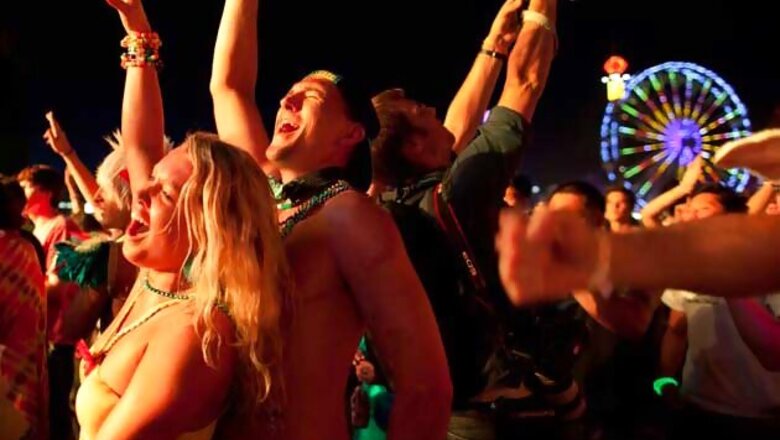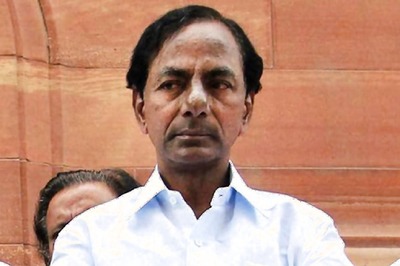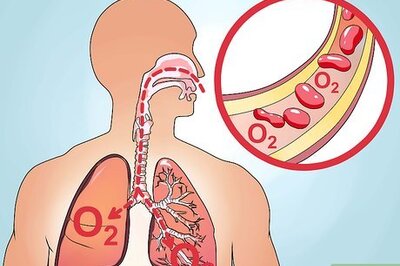
views
New Delhi: The Mumbai Police busted an alleged rave party at a hotel in Juhu on Sunday night. At least 100 people including 38 women, mostly foreign nationals, were detained. The police have also arrested the party organiser, Vishesh Vijay Handa, under the Narcotic Drugs and Psychotropic Substances (NDPS) Act. Two international cricketers, Rahul Sharma of India and Wayne Parnell of South Africa, who play in the IPL for Pune Warriors India were also detained and questioned.
The Acid connection
Rave parties, apart from the electronica-trance music and unbriddled dancing, are typically associated with Acid House parties where the revellers consume a semi-synthetic psychedelic drug called Lysergic acid diethylamide, commonly referred to as Acid. Rave revellers are typically known to have a halucinatory and delusory trip. But in India, the use of LSD is pretty limited and instead people cocaine, speed (Ecstasy) or cheaper derivatives which usually do not provide their users a 'rave on' trip as Jeff Beck or Eric Clapton of The Yardbirds, a popular British band of the 60s, would have defined the rave experience.
But in India, parties where men and women drink, consume marijuana or hashish, pop tranquilisers and dance to any kind of music is often referred to by the authorities and the press as 'rave' parties.
Origin of raves
The exact origin of raves is disputed. Some say the wild Bohemian parties in the late 1950s London used the term "rave" loosely to describe the events of Soho. According to a public document on the website of the US Justice Department, raves evolved from 1980s dance parties, aided by the emergence of European techno music and American house music.
Raves were exclusive parties organised by European clubs in the 1980s – secretive, after-hours and private – to ensure minimum interference from law officers. Attendance was restricted to invitees only. The venue of rave parties was a closely guarded secret that only the invitees and friends of invitees were told at the night of the party to keep out unwanted visitors. The document states that the secrecy surrounding the party gave the rave culture an "underground" status.
Mass marketing of raves
By the mid-1980s, rave parties overseas had developed such a following among youths that by 1987 London raves had outgrown most dance clubs. It then became common to hold all-night raves - which drew thousands of people - in large, open fields on the outskirts of the city. As the movement continued to grow in the late 1980s, the first rave parties emerged in US cities such as San Francisco and Los Angeles.
A new rave culture emerges as teenagers took over the traditional young adult ravers. The events became highly promoted and heavily commercialised and as a result less cloak-and-dagger. Many rave promoters were career criminals who profited from organising events tailored for teens. According to the document, capitalising on the growing popularity of raves, specialized industries were developed to market clothes, toys, drugs, and music.
Today's raves are characterised by high entrance fees, extensive drug use, exorbitantly priced bottled water, very dark and often dangerously overcrowded dance floors, and "chill rooms," where teenage ravers go to cool down and often engage in open sexual activity. Many club owners and promoters appear to promote the use of drugs - especially MDMA. They provide bottled water and sports drinks to manage hyperthermia and dehydration; pacifiers to prevent involuntary teeth clenching; and menthol nasal inhalers, chemical lights, and neon glow sticks to enhance the effects of MDMA.
Electric Daisy Carnival
The Electric Daisy Carnival is one of the world's largest electronic music festivals, with a weekend of outdoor music and dancing in Las Vegas with 26 carnival rides, kaleidoscope sculptures, pyrotechnic displays, a pulsating soundtrack and a reputation for heavy drug use that it hoped to live down.
The increasing notoriety of raves has caused the rave culture to spread from major metropolitan areas to more rural or conservative locations. The genres of electronic dance music played at raves include house, trance, psytrance, techno, house, jungle and jungle techno.
The parties have also spread to Asian countries such as India and Malaysia. In India, St Mary's Island, Udupi, on the Malpe coast often play host to hundreds of foreigners and tourists who had come from Bangalore, Delhi, Mumbai, Goa and other parts of India to participate in a three-day Rave Party called 'Spring Zouk' - the Island Festival. Over 600 couples participated in the festival.
Flashy lights, crowded beaches, loud rock music, round the clock acid house party packed with high levels of energy marked the festival.
Sale of liquor in the Island, nude and half nude appearances by the party animals, smoking of banned substances like ganja in a party were introduced for the first time in the Udupi region. Over 300 tents are installed every year at the Island for the tourists. The Udupi District Administration in association with 3W Concepts had organised the event as a tourism promotion tool. Locak folk forms like Dollu Kunita, Kangeelu, Yakshagana, Suggi Kunitha by the Halakki tribes are also staged before the tourists.


















Comments
0 comment